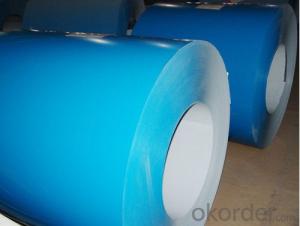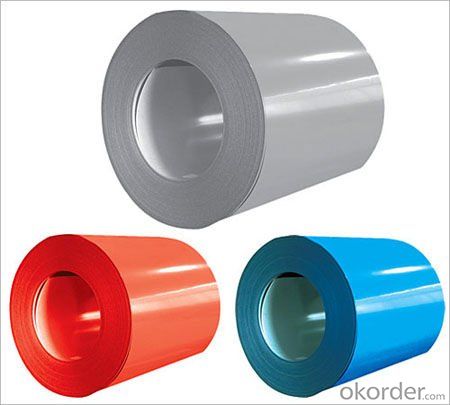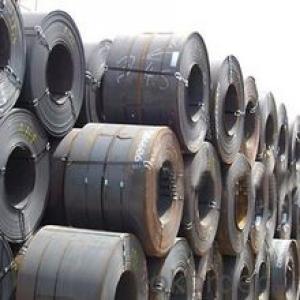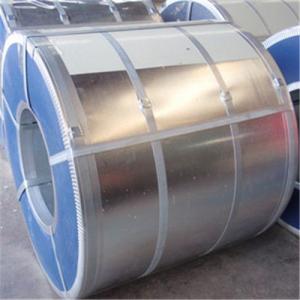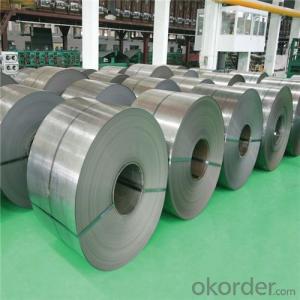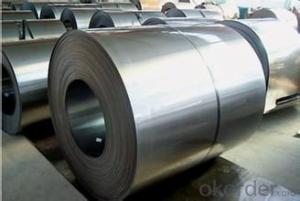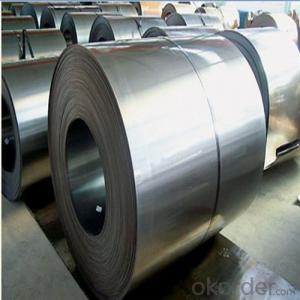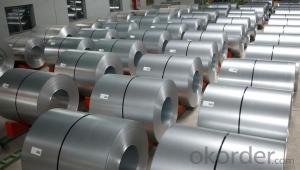printed steel coil
- Loading Port:
- China Main Port
- Payment Terms:
- TT OR LC
- Min Order Qty:
- -
- Supply Capability:
- -
OKorder Service Pledge
OKorder Financial Service
You Might Also Like
PREPAINTED GALVANIZED STEEL COIL
1)Uses hot galvanized steel coil as the base material, has zinc layer protection
2)thickness 0.15mm-1.2mm width 800mm-1250mm
1)Uses hot galvanized steel coil as the base material, has zinc layer protection
2)Dope on the zinc layer can cover and protect metal strip from rust
3)Life span is usually 1.5 times longer than that of galvanized zinc
4)Color coated sheet is light, beautiful and has good anti-erosion performance
5)Can be processed directly
6)They are mainly applied for construction, home appliance, furniture, transportation and other industries
7)Specifications: within 0.18-0.7*1000-1250*c
8)More common specifications:0.32,0.47,and 0.5mm
9)Random coating colors, common colors are sea blue, white grey and bright red
Thickness: 0.15mm-0.8mm
Width: 600mm-1250mm
Surface: top coating 17-25um, back coating 5-7um
We provide kind of steel coil as galvanized, galvalume, prepainted steel coils and steel sheet, etc.
Galvanized prepainted steel sheet in coil
Galvalume prepainted steel sheet in coil
Color coated steel sheet in coil
- Q: How are steel coils affected by global trade policies?
- Steel coils are significantly affected by global trade policies as they are subject to various tariffs, quotas, and trade restrictions imposed by different countries. These policies can impact the cost, availability, and competitiveness of steel coils in the international market. Changes in trade policies can lead to fluctuations in demand and supply, impacting the prices and trade volumes of steel coils.
- Q: What temp does fire have to be to melt steel?
- You need about 2800 degrees to melt steel.
- Q: What are the different surface treatments applied to steel coils?
- Some common surface treatments applied to steel coils include galvanizing, which involves coating the steel with a layer of zinc for corrosion resistance; painting or powder coating, which provides both protection and aesthetic appeal; and passivation, which chemically treats the steel to improve its corrosion resistance and appearance. Additionally, steel coils can also undergo processes like pickling, oiling, or chromating to remove impurities, enhance surface quality, or improve adhesion for subsequent treatments.
- Q: Don't ask me why, but I took my stainless steel ring and I heated it up with my gas stove. I stuck it in there til the metal turned red, and the flame which is normally blue turned orange for some reason when the metal turned red. Anyway, afterwards i cooled it off in water and now it's all discolored and it feels different. It's weighs less and it doesn't feel the same. Plus, it's ugly cause it's all black and blue. What happened? Someone help
- I would first check it with a magnet. If it is attracted to the magnet it has too much steel in it and that is what oxidized,not the CR. U might try to clean it with a good acid .
- Q: What is the role of steel coils in the supply chain?
- The supply chain heavily relies on steel coils, especially in the manufacturing and construction sectors. These coils, typically made from hot-rolled steel, are essential raw materials for a wide range of products like automobiles, appliances, construction materials, and industrial goods. The journey of steel coils in the supply chain begins with the production of raw steel, which is then processed and shaped into coils at steel mills. These coils are then transported to different manufacturing facilities where they are transformed into finished products. Throughout this process, steel coils act as an intermediary product that is easy to transport, stack, and manipulate according to various manufacturing requirements. One major advantage of using steel coils in the supply chain is their strength and durability. Steel possesses high tensile strength, enabling it to withstand substantial loads and pressures. This makes steel coils perfect for applications that require sturdy materials like structural components in buildings, heavy machinery, and vehicles. Furthermore, steel coils offer high customization, allowing manufacturers to tailor their dimensions and specifications to meet specific needs. This flexibility ensures the efficient delivery of steel coils that align with the requirements of diverse industries and projects. In terms of logistics, steel coils are typically transported in large quantities using specialized equipment such as flatbed trucks, railcars, or even ships. Effective logistics planning is crucial to ensure timely delivery and minimize transportation costs. Additionally, proper storage and handling are vital to prevent damage to the coils during transit and storage. Overall, steel coils play a vital role in the supply chain as versatile raw materials that can be shaped and transformed into various end products. Their strength, durability, and flexibility make them an essential component in industries that rely on high-quality steel, ultimately contributing to the overall economic growth and development of numerous sectors.
- Q: I know there is soft steel and sturdier steel they use in products. The sturdier often used for equipment that requires more durability when in operation.
- harder steel has a higher carbon and chromium content
- Q: Can steel coils be used in electrical applications?
- Yes, steel coils can be used in electrical applications. Steel coils are often used as magnetic cores in transformers and inductors, which are essential components in electrical circuits. The steel used in these coils is typically a type of high-quality electrical steel that has specific magnetic properties, such as low core losses and high permeability. These properties allow the steel coils to efficiently transfer electrical energy between different components of the circuit. Additionally, steel coils can also be used in other electrical applications, such as in the construction of electric motors and generators. Overall, steel coils are widely utilized in electrical applications due to their magnetic properties and their ability to handle high currents and temperatures.
- Q: If i get a samurai sword made of carbon steel, what is the hardest thing i can hit before it breaks? Or will it not break?
- Carbon steel is an alloy that is made up of the mixture of carbon and iron. In addition, several other elements with low maximum percentages are also included, such as manganese, with 1.65% maximum, silicon,with 0.60% maximum, and copper, with 0.60% maximum. Carbon Steel Pipe Fittings are utilized in a wide variety of applications across multiple industries. They are typically used in large shipyards, fabrication companies, chemical plants, oil refineries, machinery manufacturers, textile, and fluid transportation companies among others. They are highly cost-efficient and are much preferred over other fittings.
- Q: What are the different testing methods used for steel coils?
- There are several testing methods used for steel coils, including visual inspection, dimensional measurement, hardness testing, tensile testing, chemical analysis, and non-destructive testing techniques such as ultrasonic testing and magnetic particle inspection. These methods help ensure the quality and integrity of steel coils, allowing for accurate assessment of their mechanical properties, composition, and structural soundness.
- Q: if someone wanted to melt cast steel or iron into small-relatively simple shapes such as rod-tapered rod-or etc... how would you go about melting the steel/iron what would the mold need to be made of?
- The other answers are correct. But don't attempt this unless you have lots of experience.
Send your message to us
printed steel coil
- Loading Port:
- China Main Port
- Payment Terms:
- TT OR LC
- Min Order Qty:
- -
- Supply Capability:
- -
OKorder Service Pledge
OKorder Financial Service
Similar products
Hot products
Hot Searches
Related keywords
